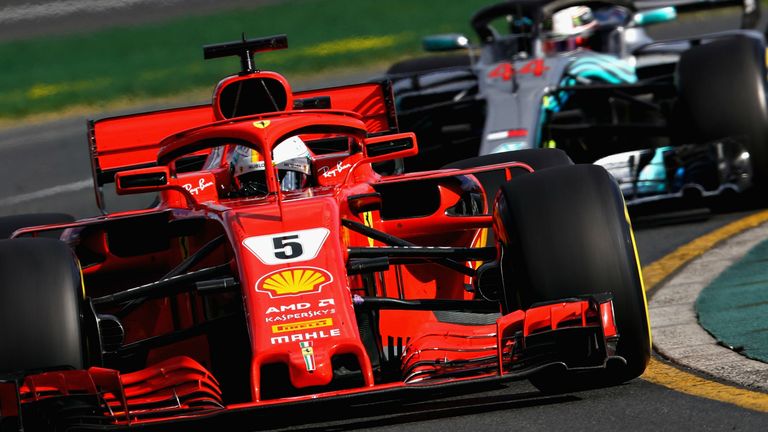F1 in 2019: FIA confirms changes in bid to boost overtaking
Simplified front wing just one of the modifications as F1 looks to promote closer racing; Made proposals to teams in Bahrain
Tuesday 11 December 2018 14:28, UK
The FIA has confirmed a number of new aerodynamic regulations for the 2019 Formula 1 season in a bid to improve overtaking.
The changes, which include a simplified front wing, have been announced following a presentation to all 10 teams at the Bahrain GP, and after complaints from drivers about how difficult it is to follow in the current cars.
Red Bull and Honda begin 2019 talks
Hamilton admits title doubts
Azerbaijan GP driver ratings
The proposals were agreed via e-vote and ratified by the Strategy Group, the F1 commission and the World Motor Sport Council on Monday after an 'intense period of research into the FIA's initial research'.
The changes to promote closer racing and make overtaking easier are:
- Simplified front wing, with a larger span, and low outwash potential
- Simplified front brake duct with no winglets
- Wider and deeper rear wing
The FIA added that 'the approved changes are separate to the ongoing work being undertaken in regard to defining Formula 1's regulations for 2021 and beyond'.
But by conducting research for 2021's technical and sporting overhaul, the F1 Group, spearheaded by technical chief Ross Brawn, discovered some ideas that could be introduced earlier.
Since the last rules reset in 2017, drivers have often argued that while the cars are much faster, following another driver closely has been extremely difficult thus creating fewer overtaking opportunities.
Those complaints grew louder following a 2018 season-opener in Australia where just five on-track passes were completed - though that in part was down to Melbourne's narrow street circuit.
F1 has been treated to three exciting and unpredictable races since then, but the FIA hopes drivers will welcome the changes to the front wing which, with the "out-wash" effect, have been found to have a major impact on closer racing.
'Ricciardo-Verstappen clash may not have happened'
Speaking about the changes, Brawn argued that the dramatic collision between Red Bull team-mates Daniel Ricciardo and Max Verstappen could have been avoided with these aerodynamic changes.
"Once Daniel had settled for his line, and Max had changed direction once more, the Australian suddenly had to cope with a car that was very light at the front end due to the turbulent air generated by the leading Red Bull," said Brawn.
"In these conditions Daniel was no more than a passenger with few, if any, options to manage the situation: he could not change direction and the hard braking he tried would have had little chance of success.
"This highlighted once more the need of finding a way to re-write the rules so as to make the cars more raceable in these conditions. The decision to approve a number of aerodynamic modifications, aimed at promoting closer racing and more overtaking, to the cars already for 2019 season is definitely an important step in the right direction.
"It's also important to note that the decision has been taken after an intense period of research into the FIA's initial proposals, which were made with the support of Formula and, conducted by a majority of the teams. A good spirit, a good way of working together for a better and more spectacular Formula 1, which is what the fans want."


